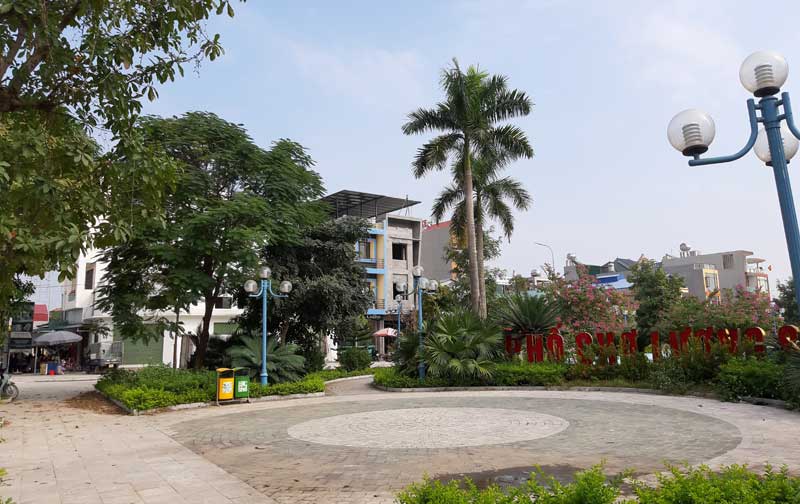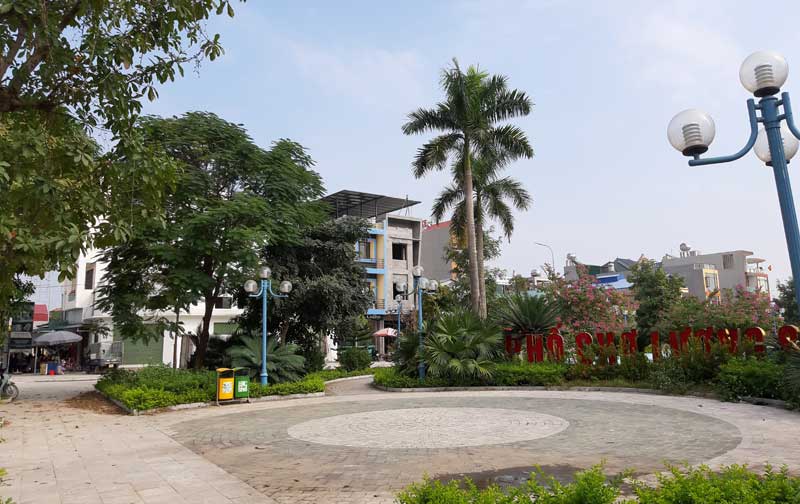
(HBO) - Luong Son town in Luong Son district of the northern mountainous province of Hoa Binh has been qualified as a fourth-tier urban area with a score of 84 on the 100-score scale.
After many years of tireless efforts, Luong Son district has gradually
realised its target of building Luong Son town and areas in the vicinity into
the fourth-tier urban area, one of the two important missions set in the 14thprovincial Party Congress’s Resolution that need to be completed in 2020.
 A residential area and central market project developed on an area of
more than 10 hectares by Queensland Co., Ltd. is the highlight of Luong Son
urban area.
A residential area and central market project developed on an area of
more than 10 hectares by Queensland Co., Ltd. is the highlight of Luong Son
urban area.
As a gateway to Hoa Binh province, Luong Son district has mobilised
resources to develop infrastructure, aiming to become a fourth-tier urban area and
a new-style rural district by 2020.
The provincial People’s Committee has approved the implementation of 16 housing
projects in Luong Son district. The projects have a combined area of 550
hectares and can house 18,000 people.
Meanwhile, the district has given the green-light to and is carrying out five
auctions of land use right with total acreage of 25 hectares with an expected
population of 6,000.
Actually, urban infrastructure, dynamic industrial parks and well-developed
services have created a facelift for the locality. Investment was poured into
developing comprehensive infrastructure at Luong Son industrial park, making
contributions to increasing export value and state budget collection while
promoting the shifting of labour from agriculture to industry.
The district is accelerating administrative procedure reforms to improve the
local business climate as well as helping businesses carry out their investment
projects. In addition, due attention has been paid to mobilising all resources
to invest in transport and industrial infrastructure, general hospitals,
gymnasiums, resort projects and waste treatment facilities.
Furthermore, priority has been given to enhancing quality of urban criteria so
as to attract more residents to the new urban area./.
Hoa Binh province is undergoing a dynamic transformation amid Vietnam’s national digital transition. Building on Poliburo’s Resolution No. 57-NQ/TW on breakthroughs in science, technology, innovation, and national digital transformation, the province has rolled out a wide range of practical action plans. A standout initiative is the "Digital Literacy for All” movement, an effort to ensure that no one is left behind in the digital era.
Hoa Binh province is undergoing a dynamic transformation in the wake of the national digital transformation movement. Building on Resolution No. 57-NQ/TW of the Politburo on breakthroughs in science, technology, innovation, and national digital transformation, the province has implemented a wide range of practical action plans. A standout initiative is the "Digital Literacy for All” movement ambitious effort to ensure that no one is left behind in the digital age.
With a spirit of unity and proactive problem-solving, the Party Committee, the government and the people of Dong Lai Commune (Tan Lac District) have made great strides in implementing the resolutions of the 24th Party Congress of the commune for the 2020 - 2025 term. Focusing on leadership and practical actions, the commune has brought the Party’s resolutions into daily life, creating strong impacts and pushing the local development forward.
Amid the nationwide push for digital transformation, young people in Hoa Binh Province are stepping up as dynamic pioneers, applying technology to enhance Youth Union operations and expand the reach of youth-led initiatives. Through creativity and adaptability, Youth Union organizations at all levels have introduced a series of practical solutions, contributing to modern governance and community development.
In recent years, An Nghia commune, located in Lac Son district, has stepped up administrative reform, focusing on improving the quality and efficiency of its single-window service unit for receiving and processing administrative procedures. These improvements have helped create favourable conditions for local residents and organisations to handle administrative procedures, contributing to the commune’s broader socio-economic development.
The Prime Minister-approved master plan to develop the multi-use value of forests ecosystems through 2030, with a vision to 2050, aims to improve the management and sustainable use of forest resources, create jobs, increase incomes, and improve the living standards of ethnic minorities, people in mountainous and remote areas, forest workers and those living near forests.



 A residential area and central market project developed on an area of
more than 10 hectares by Queensland Co., Ltd. is the highlight of Luong Son
urban area.
A residential area and central market project developed on an area of
more than 10 hectares by Queensland Co., Ltd. is the highlight of Luong Son
urban area.